Hue, Vietnam’s ancient capital, is a captivating destination that enchants every visitor. It boasts a rich collection of historical artifacts from Vietnam’s last feudal dynasty, making it a living museum of Vietnamese culture and heritage. Beyond its history, Hue is also known for its serene and poetic landscapes, offering a peaceful and picturesque experience for travelers. If you’re considering adding Hue to your Vietnam itinerary, be sure to check out this article for useful trip planning tips and insights on how many days to spend in Hue!
1. Why go to Hue?
Hue offers a genuine, slower-paced side of Vietnam that's hard to find in the bigger, busier cities. It's the perfect place to slow down and truly absorb the country’s rich history and culture.
The imperial history is everywhere
Once the imperial capital of Vietnam, Hue was the seat of the Nguyen Dynasty, and its quiet elegance still echoes through the city. You’ll find ancient citadel walls weathered by time, royal tombs tucked into the hills, and locals who still speak with pride about their city’s royal past. But Hue isn’t stuck in history — it lives in the present through its food, its festivals, and the daily rhythm of life along the Perfume River.
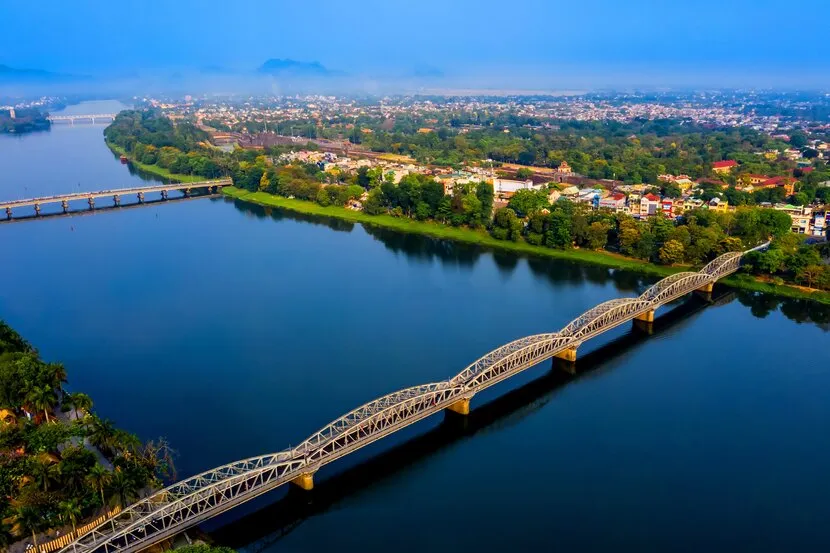
The food is unique and famous
Hue is a culinary hub, famous for its sophisticated royal cuisine and incredible street food. Unlike the food in Hanoi or Ho Chi Minh City, Hue's dishes are known for their small, delicate portions and complex flavors.
It's beautifully scenic
Beyond the flavours, Hue is simply beautiful. The city is divided by the peaceful Perfume River, which adds a magical, romantic feel. Taking a boat trip down the river at sunset is a truly unforgettable experience. Plus, Hue is surrounded by lush green landscapes, tranquil pagodas like the famous Thien Mu Pagoda, and serene gardens that provide a perfect escape from city life.
And with its location in the heart of Central Vietnam, Hue is also the perfect stop between Da Nang, Hoi An and Phong Nha, making it easy to include in your itinerary.
2. A glimpse into Hue’s history
Hue was once the capital of imperial Vietnam for over 140 years, from 1802 to 1945. The city was the seat of power for the Nguyen Dynasty, the last feudal dynasty to rule the country.
During this time, the emperors built the magnificent Imperial City, a massive walled fortress that served as the home for the royal family and the heart of the nation’s government. They also constructed a series of intricate royal tombs in the surrounding hills, each a final resting place reflecting the unique personality and vision of a different emperor.
At the centre of it all is the Imperial City, a vast walled complex inspired by Beijing’s Forbidden City. Inside, you'll find what remains of grand halls, royal residences, and ancient gates — many damaged during wars, but still incredibly atmospheric. Walking through it feels like stepping into another time.
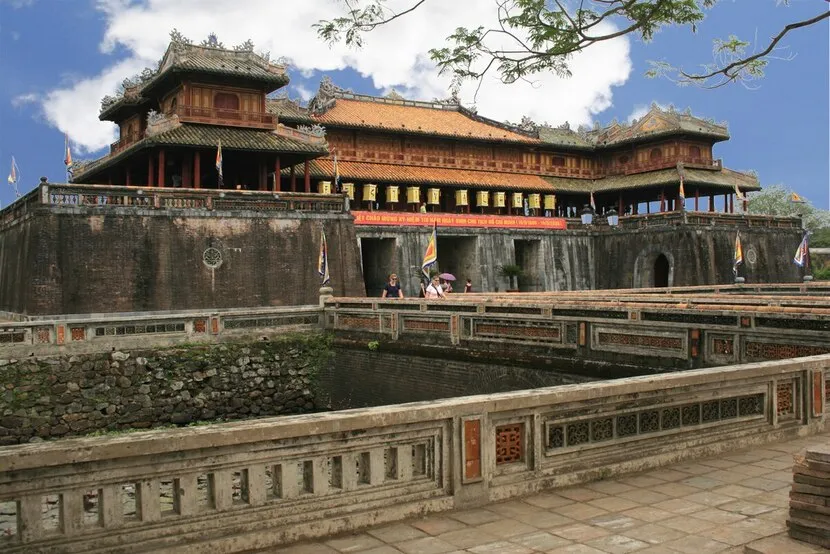
But Hue’s history isn’t only about emperors. It’s also a city shaped by conflict. During the Tet Offensive of 1968, the city suffered immense damage, with many of the ancient structures within the Imperial City being destroyed. The city has since been a testament to resilience. Thanks to its designation as a UNESCO World Heritage site in 1993, a major effort has been made to restore and preserve its ancient architecture.
Today, visiting Hue is like walking through a living museum, where you can see both the grandeur of its past and the enduring marks of its history.
3. When to visit Hue?
Hue has a tropical monsoon climate, which means the weather can shift dramatically depending on the time of year. Choosing the right time to visit can really shape your experience — especially if you're planning to explore historical sites or enjoy a boat ride on the Perfume River.
Best time to visit: January to April
This is Hue at its most pleasant. The temperatures are cooler (around 22–27°C), there’s less rainfall, and the skies are generally clear — perfect for sightseeing, walking tours, and river cruises. It’s also when the city feels more alive, with festivals like Tet (Vietnamese Lunar New Year) bringing in colour and local celebrations. January and February can be cool and misty, creating a magical, atmospheric feel around the ancient sites
May to August: Hot and dry
Hue’s summer happens from May till August. Temperatures can climb to 35°C and beyond, especially in June and July. While it’s still possible to visit, you’ll want to schedule outdoor activities early in the morning or late in the afternoon, and take breaks indoors or by the river during the hottest hours. Be sure to stay hydrated and wear sun protection.
September to December: Rainy season
The period of Sept. till Dec. is the wettest time of the year, with heavy and frequent rainfall — sometimes even flooding. It’s not the ideal time for sightseeing, especially outdoor activities, but it’s also when tourist numbers drop, so you might find better deals and quieter streets. If you don’t mind the rain and pack accordingly, it can still be worth it.
A special note: The Hue Festival is a major cultural event. If you want to experience the city at its most vibrant, check the festival schedule before you book your trip.
4. Getting to Hue
Hue is located in Central Vietnam, making it a convenient stop between other popular destinations like Da Nang, Hoi An, and Phong Nha. Here are the most common ways to get there.
By plane
The fastest way to get to Hue is by flying into Phu Bai International Airport (HUI). The airport is located about 15 km (9 miles) south of the city center.
From Hanoi or Ho Chi Minh City: There are multiple daily flights from both major cities. The flight takes just over 1 hour.
Getting from the airport toHue city center: You can easily grab a taxi or a ride-hailing service like Grab. A taxi ride to the city center typically costs around 200,000 - 250,000 VND. Many hotels also offer airport shuttle services, so it's worth checking with them in advance.
By train
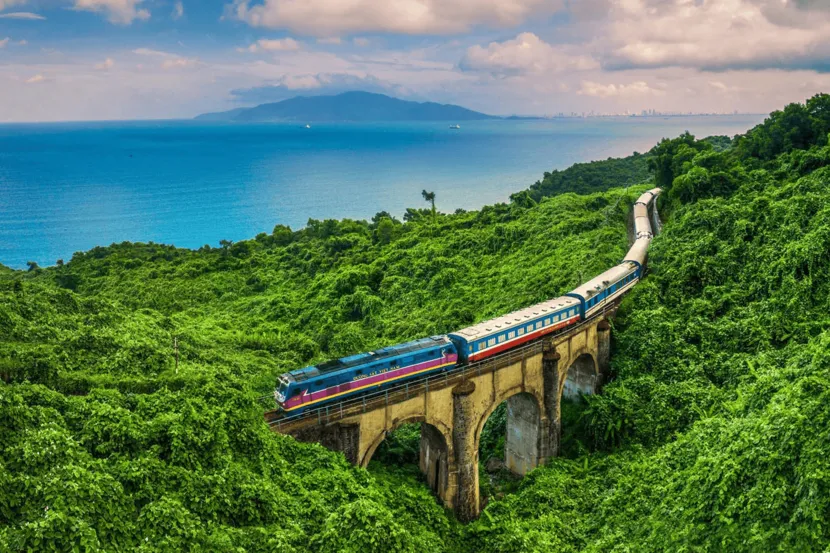
Traveling by train is a scenic and relaxing way to reach Hue — especially if you're coming from Da Nang, Hoi An (via Da Nang Station), or Hanoi. The stretch between Da Nang and Hue is one of the most beautiful train journeys in the world, with views of mountains, coastline, and jungle.
From Da Nang to Hue: The train ride is about 2.5 to 3 hours. It winds through the mountains and offers incredible views of the coastline.
From Hanoi or Ho Chi Minh City: Overnight trains are a popular choice for any travelers. The journey is long (around 12-14 hours from Hanoi, 18-22 hours from Ho Chi Minh City).
If you enjoy slow travel and want to take in the scenery, the train is a rewarding option.
By bus or private car
For short distances, buses and private cars are also the flexible options.
From Da Nang or Hoi An: A bus or private car ride takes about 2-3 hours. This is the most common and convenient option for travelers moving between these cities.
From Phong Nha: The journey takes about 4-5 hours by bus or private car, making it easy to combine a cave-exploring trip with a cultural one.
Hiring a private car and driver is a popular option — especially if you want to stop along the scenic Hai Van Pass, a winding coastal road with breathtaking views.
If you prefer a stress-free experience with everything arranged for you, joining a tour package is an excellent option. IZITOUR offers a Hue tour package and a Central Vietnam tour package that include transport, accommodation, guided tours, and curated activities. It’s an easy and efficient way to explore Hue, especially if you’re short on time or want a deeper, local perspective without having to plan every detail yourself.
5. Getting around Hue
Once you've arrived, you'll find that Hue is an easy city to navigate, with several charming and convenient options for getting around. Still, having the right transport option can make your experience smoother and more enjoyable.
Walking
Hue’s central areas — including the Imperial City and nearby streets — are pedestrian-friendly. Walking is the best way to explore the Citadel, riverside paths, local markets, and small eateries at your own pace. The city can get hot and humid, so plan walks in the early morning or late afternoon, carry water and sun protection.
By taxi or Grab
For longer distances or when you want to get somewhere quickly, a taxi or a ride-hailing app like Grab is one option. It's especially useful for visiting the royal tombs, which are located in the surrounding countryside and are too far to walk to.
Private car with driver
If you want to see more without the hassle of navigating on your own, consider booking a private car and driver or a guided day tour. This is particularly useful if you're short on time or travelling with family. You can visit multiple attractions, including tombs, pagodas, and countryside spots, in comfort and at your own pace.
By motorbike
If you're comfortable on two wheels, renting a motorbike gives you the ultimate freedom to explore at your own pace. You can rent one from your hotel or a local shop for a small daily fee of 100.000 - 150.000 VND. This is a popular option for those who want to visit the tombs or venture out to the beautiful countryside and coastal areas on their own. Just be sure to wear a helmet and have an international driving license.
By cyclo
For a truly unique and relaxing experience, take a ride on a cyclo. This three-wheeled bicycle taxi is a classic symbol of Hue. You can book a ride with the cyclo in Hue at these places: Huong Giang Hotel, Century Hotel, Saigon Morin Hotel, no. 2 Le Loi Street, etc. However, this means of transportation is only for experience, and it should not be used as the main mode of transportation because it is quite expensive and time-consuming.
By bicycle
For a more gentle pace, cycling is a wonderful way to see the city. Hue is relatively flat and has many quiet, tree-lined streets, making it perfect for a bike ride. You can rent a bicycle and spend a pleasant day exploring the city center, crossing the bridges over the Perfume River, and even venturing into the nearby villages.
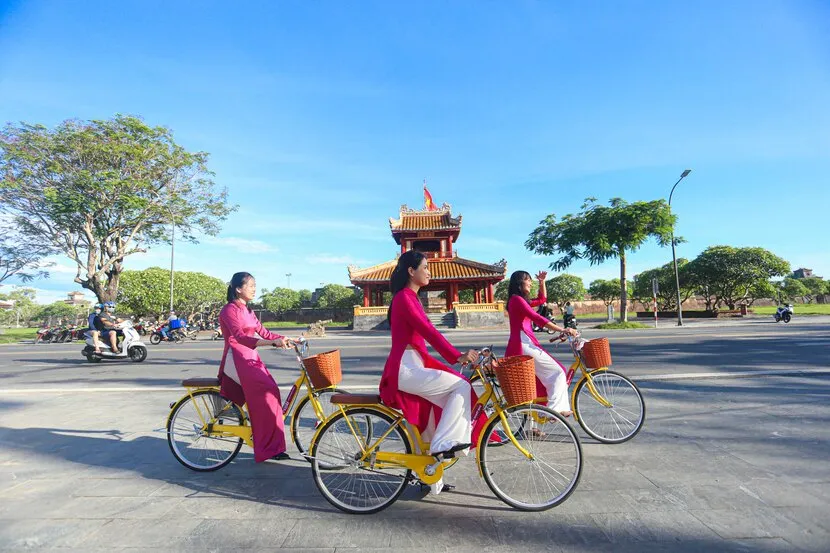
Dragon boats
Dragon Boats is a special service that takes tourists on the Perfume River. These unique boats, shaped like dragons and adorned with golden vermilion paint, are extremely popular among visitors to Hue. Tourists get to feel like ancient kings as they sit on the boats, glide along the serene water, listen to the songs of Hue, release lanterns, and enjoy the evening breeze.
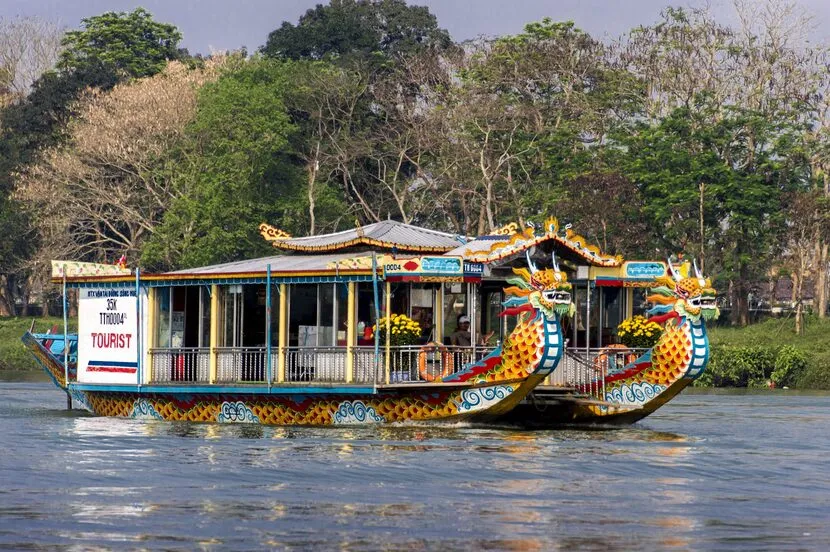
6. Highlights of Hue
Hue is rich with historical and cultural treasures. While you could spend weeks exploring everything, these are the must-see highlights that should be on every traveler's list.
The Imperial City
This is the crown jewel of Hue — a sprawling walled fortress once home to the Nguyen emperors.
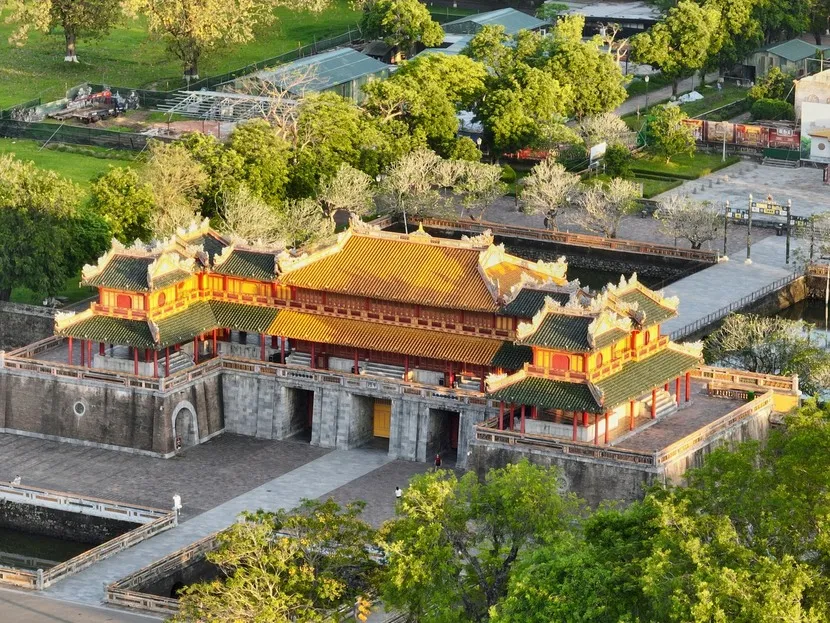
Ngo Mon Gate – The majestic main entrance to the Imperial City of Hue
Inside, you’ll find palaces, temples, gates, and gardens that echo the power and elegance of the old royal court. While some structures were damaged during wars, many have been beautifully restored. Top sights inside includes Noon Gate (Ngo Mon), Thai Hoa Palace, the Forbidden Purple City.
See more: The ancient beauty of Hue Imperial City
The Royal Tombs
Scattered across the hills outside the city are the royal tombs of the Nguyen emperors — each one unique in design and atmosphere. These tombs are not just burial sites, but complex architectural works blending nature, philosophy, and legacy.
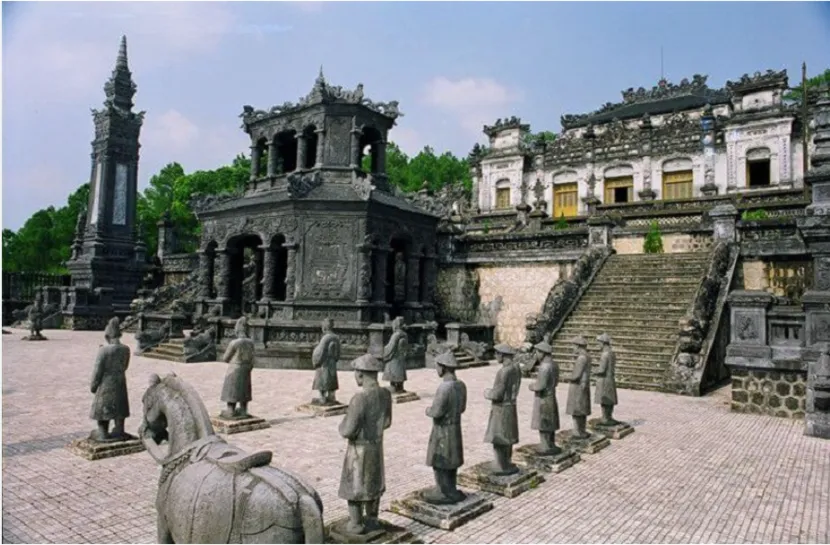
Tomb of Emperor Khai Dinh in Hue
The most famous ones to visit are:
Tomb of Emperor Khai Dinh: A stunning mix of Vietnamese, French, and Chinese architecture, known for its intricate mosaics and dramatic design.
Tomb of Emperor Minh Mang: A beautiful complex of lakes, courtyards, and pavilions, perfectly blending with the natural landscape.
Tomb of Emperor Tu Duc: One of the most picturesque tombs, it features a serene lake and elegant pavilions where the emperor would come to relax and write poetry.
A guided tour helps bring these sites to life with stories and historical context.
Thien Mu Pagoda
Perched on a hill overlooking the Perfume River, Thien Mu Pagoda is one of the oldest religious sites in Vietnam.
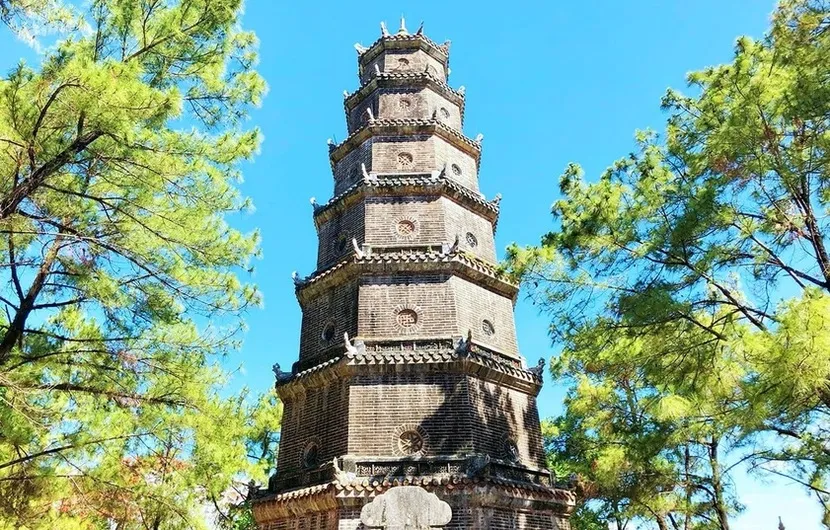
Phuoc Duyen Tower – The iconic seven-story pagoda of Thien Mu Pagoda in Hue
You can get Thien Mu Pagoda by taking a scenic boat trip on the river, which adds to the peaceful and spiritual experience. Don’t miss witnessing the Austin car displayed at the site, famously associated with a monk’s self-immolation in Saigon during the 1960s.
The Perfume River
The river that flows through the center of Hue is more than just a waterway—it's the soul of the city. Taking a dragon boat cruise on the river, often including folk music performances, is a classic Hue experience, especially at sunset. It's a perfect way to see the city from a different perspective and enjoy the gentle, romantic atmosphere that Hue is famous for.
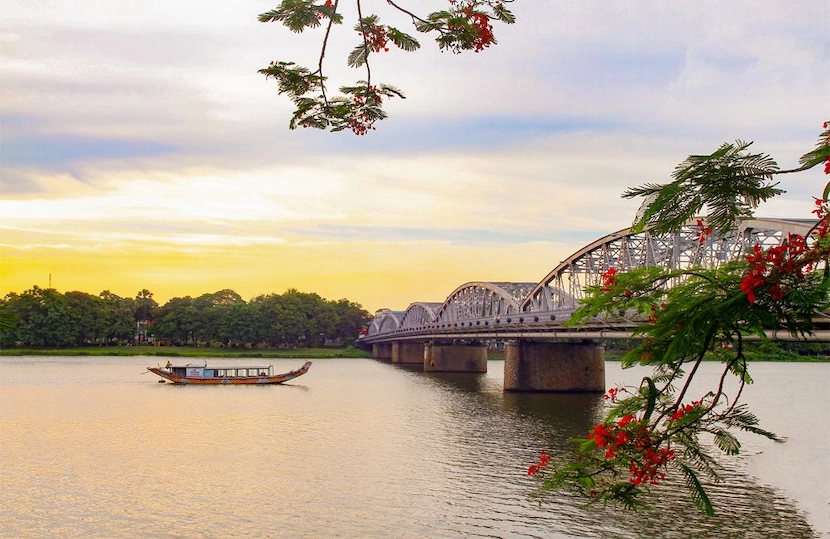
See more: Perfume River and typical bridges in Hue Vietnam
Dong Ba Market
Hue’s main market is a sensory overload in the best way. Dong Ba market is chaotic, colourful, and packed with everything from fresh produce and spices to clothing and souvenirs.
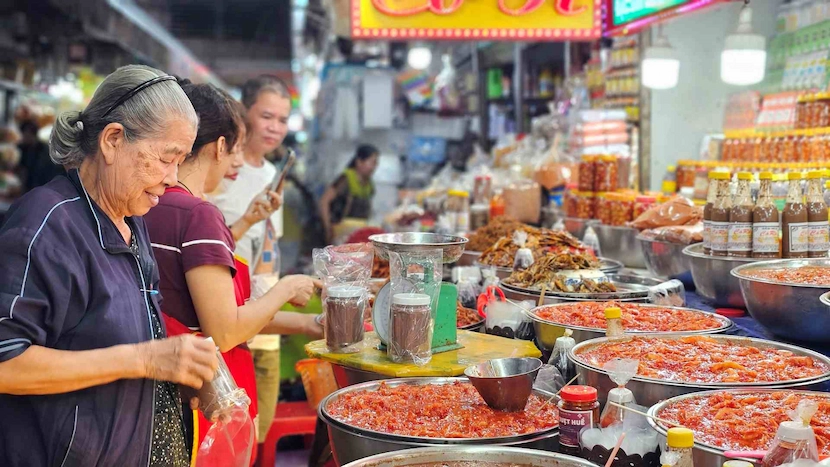
It’s also a great spot to try local snacks. Visit in the morning when the Dong Ba market is most lively and the food is freshest.
See more: How to explore Dong Ba market?
The craft & eco-Villages
To truly understand Hue’s culture, it's worth visiting its traditional craft villages. In these peaceful, rural settings, you can see how ancient traditions are kept alive.
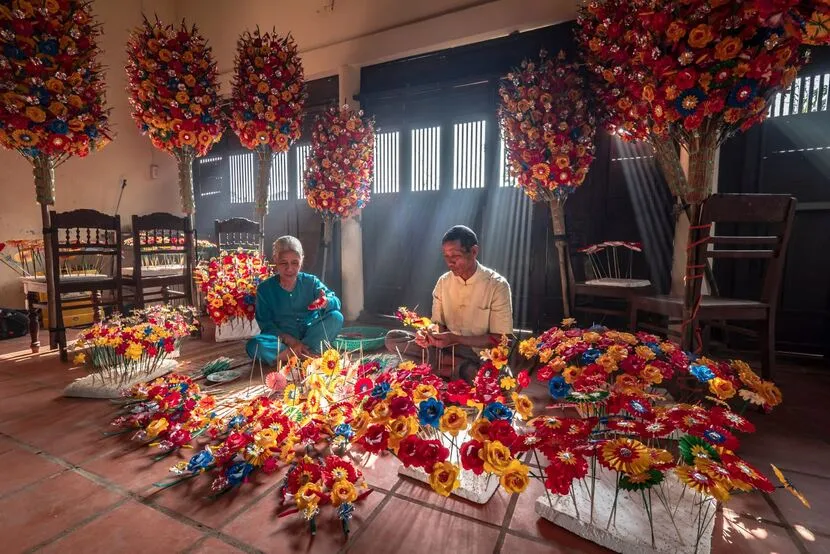
Thanh Tien paper flower-making village
In Sinh Village, artisans still create beautiful woodblock prints using centuries-old techniques. In Thanh Tien, you can watch artisans meticulously craft colorful paper flowers that are central to local spiritual traditions. For a taste of rural life, the eco-village of Thuy Bieu offers a serene escape, famous for its pomelo gardens and traditional garden houses. You can also visit Thuy Xuan Incense Village, where colorful sticks of incense are laid out to dry, creating a vibrant photo opportunity. These villages provide an authentic glimpse into the daily life and skilled craftsmanship that define the region.
Scenic viewpoints
Just a short trip from Hue’s city center, Vong Canh Hill offers one of the most iconic and dreamy views of the city.
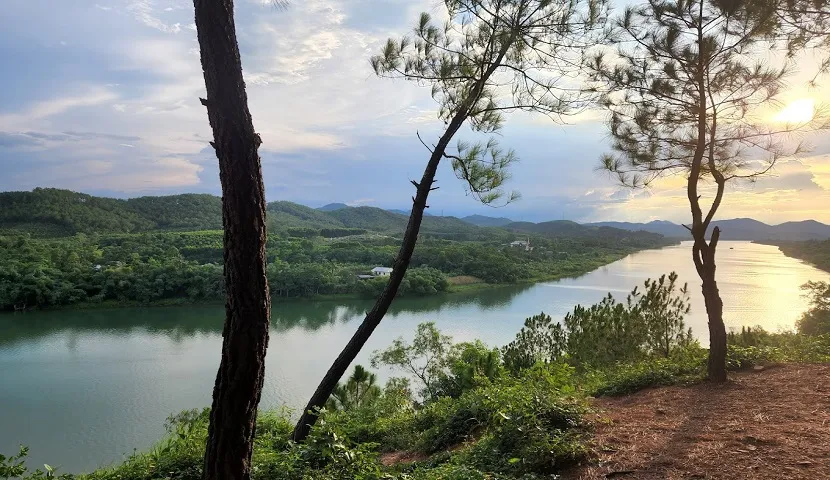
From its peak, you can see the Perfume River gracefully meandering through lush green gardens, with the city's ancient temples and royal tombs dotted along its banks. Often called the "King's Screen," nearby Ngu Binh Mountain forms a majestic backdrop, creating a natural, harmonious landscape that ancient emperors admired for its symbolic beauty. It’s a peaceful spot that perfectly captures the romantic and serene spirit of Hue.
Bach Ma National Park
For nature lovers and hikers, Bach Ma National Park is a must-do day trip. Located about an hour from Hue, this park is a natural paradise, home to a diverse range of flora and fauna. As you hike through its lush, misty forests, you can discover hidden waterfalls and enjoy stunning panoramic views from the summit. The park is also home to Truc Lam Bach Ma Zen Monastery, a beautiful and peaceful Buddhist retreat nestled beside Truoi Lake. This sacred spot offers a quiet place for reflection, perfectly blending natural beauty with spiritual calm.
Lang Co Bay
Located about 12–50km from the city center, this beautiful coastal bay is often called one of the most beautiful bays in the world. Famous for its pristine white sand beaches and clear blue waters, it's a perfect seaside escape. Here, you can relax by the sea, enjoy fresh seafood caught by local fishermen, and take in the magnificent scenery. It’s a wonderful contrast to the historic feel of Hue and a great place to unwind. The best time to visit and enjoy a swim or relax by the beach is during the dry season, from March to August.
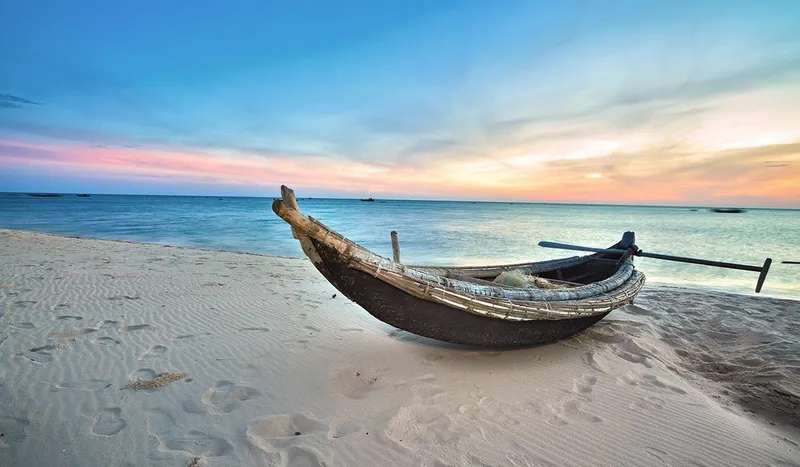
See more: Hue beaches : 08 picture-perfect gems
Chuon Lagoon and Tam Giang Lagoon
Step away from the city's history and into the tranquil heart of local life at the Tam Giang and Chuon Lagoons. As part of Southeast Asia’s largest lagoon system, these vast stretches of water are where time seems to slow down. Here, you'll find local fishermen at work, their small boats gliding silently across the surface, casting nets in a rhythm passed down through generations. The best time to visit is late afternoon, when the sky transforms into a breathtaking canvas of oranges and purples, providing an unforgettable sunset experience over the water.
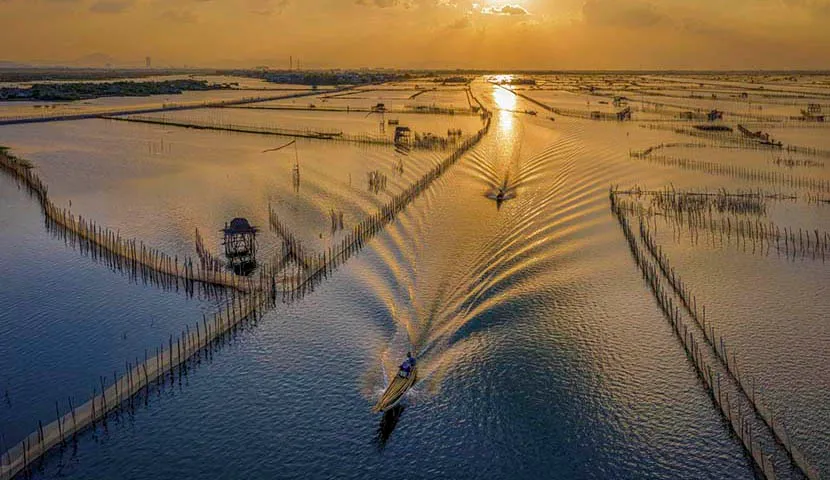
Tam Giang – The largest brackish water lagoon in Southeast Asia
7. What to eat and drink in Hue?
Hue is a culinary paradise, famous throughout Vietnam for its sophisticated royal cuisine and its incredible street food. The food here is known for its delicate balance of flavors—spicy, sweet, sour, and salty—and is often served in small portions so you can try a little of everything at once. Don’t leave without trying these iconic dishes.
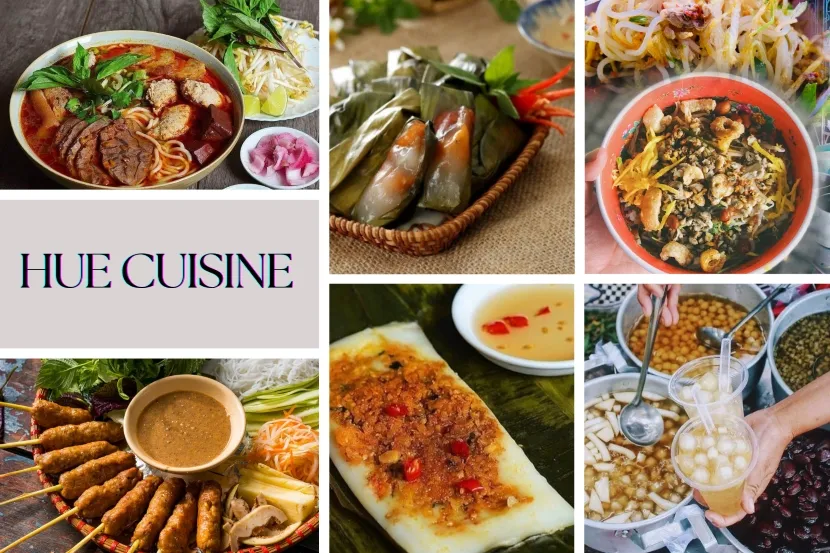
Hue-style Beef Noodle Soup
This is the city's most famous dish, and it's a world away from the Phở of Hanoi. Bún Bò Huế is known for its rich, spicy, and savory broth, which gets its deep flavor from beef bones, lemongrass, and a hint of fermented shrimp paste. It's served with thick rice noodles, tender slices of beef, and a variety of fresh herbs.
- A great place to try: Bún Bò Huế Mệ Kéo - 20 Bach Dang Street, Hue City
Clam rice
A uniquely Hue dish. It's a flavorful bowl of cold rice topped with stir-fried baby clams, crispy pork rind, crunchy peanuts, and fresh herbs. A small bowl of hot clam broth is served on the side to pour over the rice, creating a mix of textures and temperatures that is both refreshing and delicious.
- A great place to try: Dong Ba Market
Steamed savory cakes
These are a trio of delicate, bite-sized rice cakes. Bánh Bèo are small, steamed rice discs with a savory shrimp topping. Bánh Nậm are rectangular rice cakes steamed in banana leaves. Bánh Lọc are translucent tapioca dumplings filled with shrimp and pork. They are all served with a sweet and spicy dipping sauce.
- A great place to try: Quán Bánh Bèo Nậm Lọc Huế Xưa - 1 Nguyen Binh Khiem Street, Hue City
Hue grilled pork skewers
These are spiced pork skewers grilled over charcoal until they are fragrant and tender. You eat them by wrapping the skewer in a rice paper with fresh herbs, crispy rice paper, and a slice of star fruit or green mango, then dipping it in a rich peanut sauce. It's an interactive and incredibly tasty experience.
- A great place to try: Lạc Thiện Restaurant - 6 Dinh Tien Hoang Street, Hue City
Hue Sweet Soups
Hue is also famous for its wide variety of sweet desserts. Visit a chè shop to try different kinds of sweet soups, from sweet corn chè to green bean, lotus seed, and even taro. They are the perfect way to cool down and end a meal.
- A great place to try: Chè Hẻm - Alley 1, 29 Hung Vuong Street, Hue City
Royal cuisine tastings
Some restaurants in Hue offer a tasting menu of “imperial-style” dishes once served to royalty — delicate, artfully presented, and meant to be eaten slowly. Expect multiple small courses, including soups, appetisers, main dishes, and desserts.
- A great place to try: Ancient Hue Restaurant - 104/47 Kim Long, Hue City
See more: 7 restaurants in Hue to enjoy Vietnamese culinary quintessence
8. Dos and don’t in Hue
Hue is more traditional and reserved than bigger cities. The pace is slower, the culture is deeply respectful, and small gestures of courtesy go a long way. Here are some key dos and don’ts to help you navigate the city with confidence and respect.
Dos
✔ Dress modestly when visiting temples, pagodas, and tombs
Hue is proud of its royal and religious heritage. Cover your shoulders and knees when entering sacred or historical sites.
✔ Carry cash (Vietnamese dong)
Many small restaurants, shops, and markets don’t accept cards. Keep small notes handy for street food and tips.
✔ Stay hydrated
Hue can get very hot, especially in the summer. Make sure to drink plenty of water and wear a hat when exploring.
✔ Explore beyond the city center
While the Citadel and tombs are amazing, the real charm of Hue lies in its peaceful countryside, lagoons, and craft villages.
Don'ts
✖ Don’t be loud or overly expressive in sacred spaces
Temples and pagodas are places of worship, so keep your voice down and behave respectfully, especially if monks or locals are praying.
✖ Don't touch sacred objects
Avoid touching statues of Buddha or other sacred relics in temples and pagodas.
✖ Don't forget to remove your shoes
When entering a home or certain pagodas, take off your shoes. This is a sign of respect for the space.
✖ Don’t underestimate travel times
Even short distances around Hue can take longer than expected, especially if you’re visiting rural villages or tombs outside the city centre. Plan ahead.
9. Trip ideas: Hue in 1, 2, 3 days
With its stunning landscapes and UNESCO heritage attractions, Hue City has become a captivating destination for visitors from all over the world. A common question we hear is, "How many days should I spend in Hue, Vietnam?" You can comfortably explore Hue in 1 to 3 days, or extend your stay to visit neighboring provinces like Quang Tri and Da Nang. Keep reading to find the perfect Hue itinerary for your adventure in this ancient capital.
Hue 1 day itinerary

To explore Hue in 1 day, we'll focus on a rich itinerary that blends Hue's imperial past with its serene rural life.
Start your day with a visit to one of the magnificent royal tombs of the Nguyen emperors. The Tomb of Minh Mang or Tomb of Khai Dinh are popular choices for their unique architecture and serene atmosphere. The choice of which tomb to visit depends on your route and personal preference. It's worth noting that these mausoleums are located a fair distance from each other, so it's often best to choose just one or two to explore in a single day to avoid feeling rushed.
After your visit, take a boat trip along the Perfume River to Thuy Bieu Village. This peaceful village is famous for its pomelo trees, and you can cycle around under their shade, visit a traditional garden house, and interact with the local villagers. You can even take part in a cooking class to learn the secrets of Hue's famous cuisine
In the afternoon, return to the city for a visit to the famous Thien Mu Pagoda, an ancient religious site located on the banks of the Perfume River. The visit allows you to get to know the very quaint sites and breathe in the peaceful atmosphere. Afterward, spend the rest of the afternoon immersing yourself in the Imperial City, or actually the rest of the Hue Citadel. Despite the damage from years of war, this massive complex still holds countless fascinating stories and historical relics to explore.
At the end of the day, don't forget to visit the ancient Dong Ba market, built in 1885. The market still functions normally and is one of Hue people’s prides. It's the perfect place to sample authentic street food, buy souvenirs, and soak in the lively atmosphere.
Hue half-day itinerary
If you're less interested in history and more keen on immersing yourself in Hue's rural and cultural life, a half-day trip to its ancient and craft villages is a wonderful option.
MORNING

For a long time, Hue’s traditional arts are famous. Thanh Tien Village is famous for its intricate paper flowers, while Sinh Village is known for its centuries-old woodblock prints. Visiting these villages, especially before the Lunar New Year, is a great way to see how local traditions are kept alive through skillful craftsmanship. As these two villages and Tien Non village are located on the other side of the river, why not embark on a royal boat trip to reach the villages.
AFTERNOON
For a less touristy experience, head to the beautiful Chuon Lagoon. This is an ideal spot for those who love vivid sunsets and want to witness the peaceful life of local fishermen. A small note: the best time to visit is around 5:00 PM. Arriving earlier might mean you face strong sunshine with not many other activities to enjoy.
Hue 2 day itinerary
Spending two days in Hue is the perfect amount of time to get to know the city. With this itinerary, you can comfortably visit all the main highlights without feeling rushed, allowing you to truly immerse yourself in Hue’s peaceful, slower pace of life.
Take a look at the suggested itinerary below:
- Day 1: Tomb of Emperor Minh Mang - Hon Chen Temple - Thien Mu Pagoda - An Hien Garden House - Hue Citadel
- Day 2: Tomb of Emperor Tu Duc - Thuy Xuan Incense Village - Thanh Tien paper flower village - Sinh Village - Dong Ba Market
Hue 3 day itinerary
With three days in Hue, you have the perfect opportunity to combine imperial history with a beautiful coastal escape. It would be a shame to miss spending a whole day at Lang Co Bay, one of the most stunning seaside spots in Vietnam. Located conveniently on the way to Da Nang, it's an ideal place to relax and enjoy the sea air before continuing your journey.
- Day 1: Hue Citadel - Ancient Garden House An Hien - Thien Mu Pagoda - Tomb of Tu Duc - Dong Ba Market
- Day 2: Tomb of Khai Dinh - Thuy Xuan Incense Village - transfer to Lang Co Bay
- Day 3: Lang Co Beach - Hai Van Pass - Da Nang
Extend your trip from Hue
Hue is perfectly positioned to be the starting point for a grand adventure through Central Vietnam. Combining a visit to Hue with the surrounding provinces is a popular choice, allowing you to experience the region’s diverse beauty.
To the South: You can easily reach famous destinations like Da Nang, a modern and bustling coastal city, and Hoi An, with the ancient charm of a town that has existed for centuries.
To the North: Nature and adventure lovers can head to Phong Nha-Ke Bang National Park, home to spectacular cave systems. Meanwhile, Quang Tri attracts those interested in modern Vietnamese history with its famous war-related relics in the DMZ.
Combining these destinations with your time in Hue creates a truly memorable and comprehensive journey.
So there you have it—all the tips and tricks you need to explore Hue Vietnam. We hope this guide helps you plan a truly unforgettable trip. It is the cultural heart of Vietnam, home to magnificent heritage sites like the Imperial City and royal tombs. Hue's cuisine is famous for its balance and sophistication, from royal delicacies to unique street foods. You’ve also discovered the poetic beauty of the rivers, bays and the traditional craft villages. To help you plan, this guide offers flexible itineraries from 1 to three days, along with useful tips on when to visit, how to get around, and important do’s and don’ts. We hope this information helps you have a truly memorable journey in the ancient capital.
Ready to turn this plan into a reality? Consider booking a customized tour with us. As a reputable local travel company with expert guides and transparent pricing, IZITOUR offers a wide range of tour packages throughout Central Vietnam and beyond, ensuring you enjoy a perfectly cared-for trip.
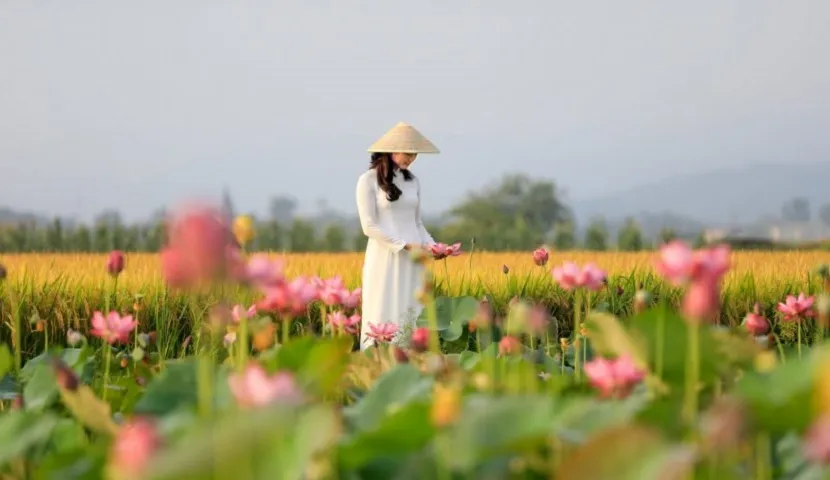








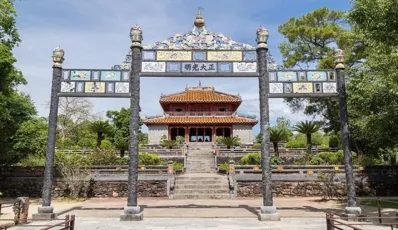
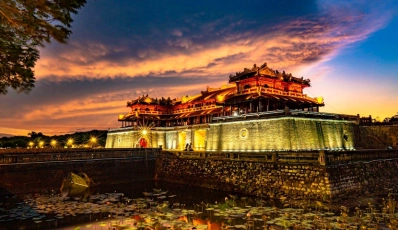
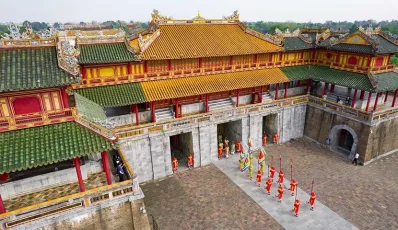
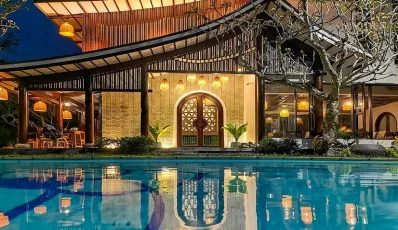
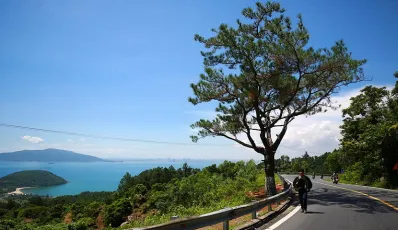

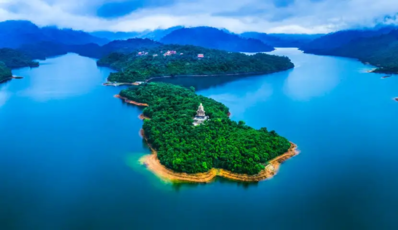

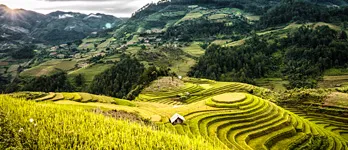
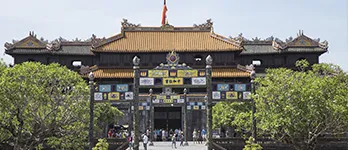
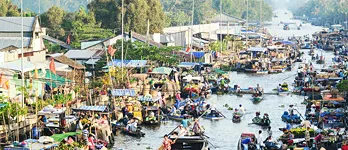

 TRAVELERS' CHOICE 2026
TRAVELERS' CHOICE 2026 



08 Comments
United States
Vietnam
India
Vietnam
France
Bonjour, je prépare mon voyage Hanoï, Hue, Hoi An pour mi-2024. Je souhaite visiter des endroits éloignés de Hue et Hoi An et j'aurai besoin d'un chauffeur. Est-il possible de trouver sur place et à un prix raisonnable ? Merci.
Vietnam
United States
Our trip to Vietnam is expected to start in April. Is it good to include Hue on that time?
Vietnam
Hi Nicola, April is a great time to visit Hue as it experiences very little rain and is less hot. See more our advice for travelling in April via this link A Travel Guide to Visit Vietnam in April.
Write Reply